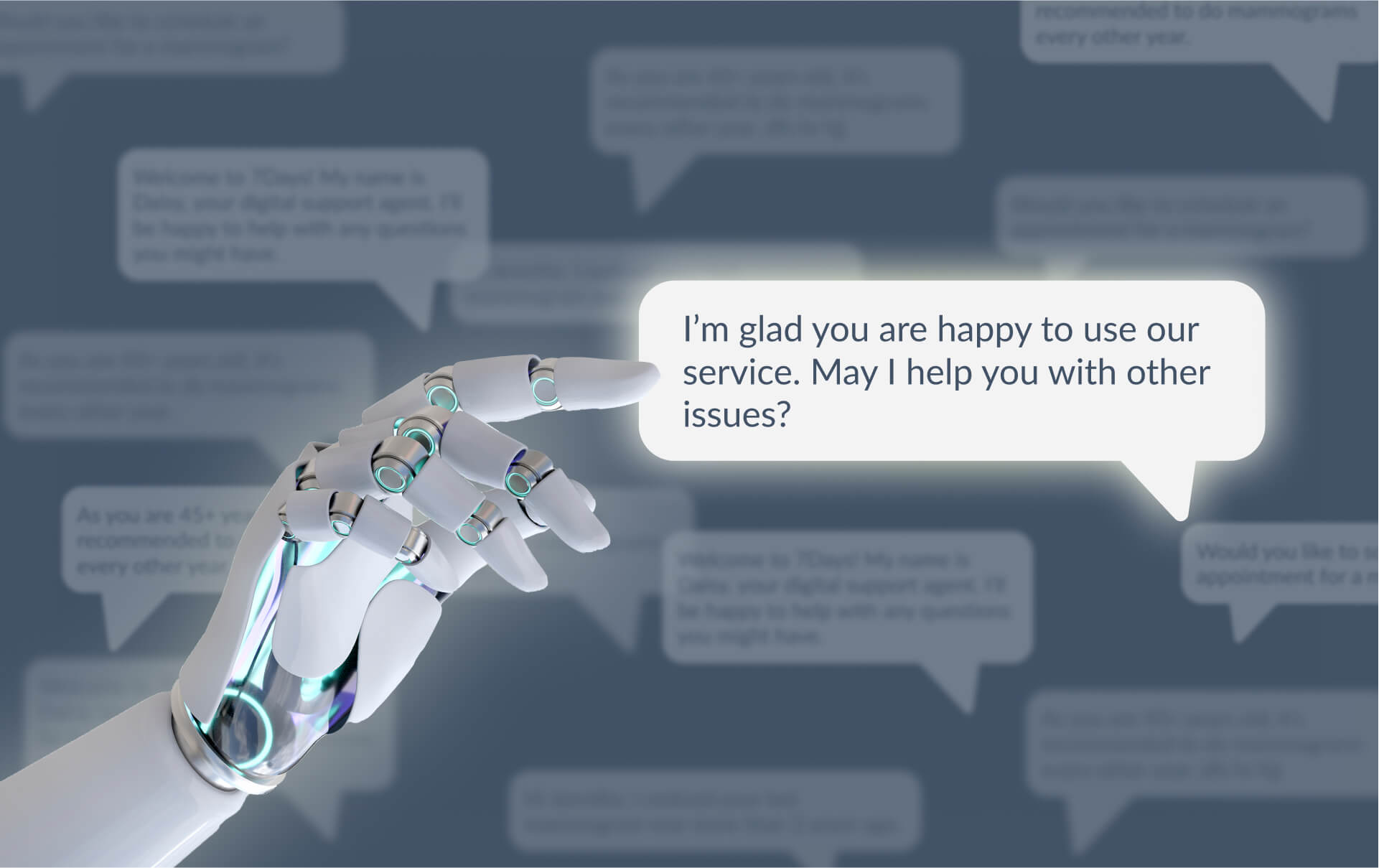Top Customer Service Chatbots: 6 Examples & Their Winning Traits
In this blog post, we will explore the best customer service chatbots and discuss their benefits and key features and showcase some successful case studies. Whether you’re a small startup or a large enterprise, understanding the potential of customer service chatbots can help you revolutionize your company.
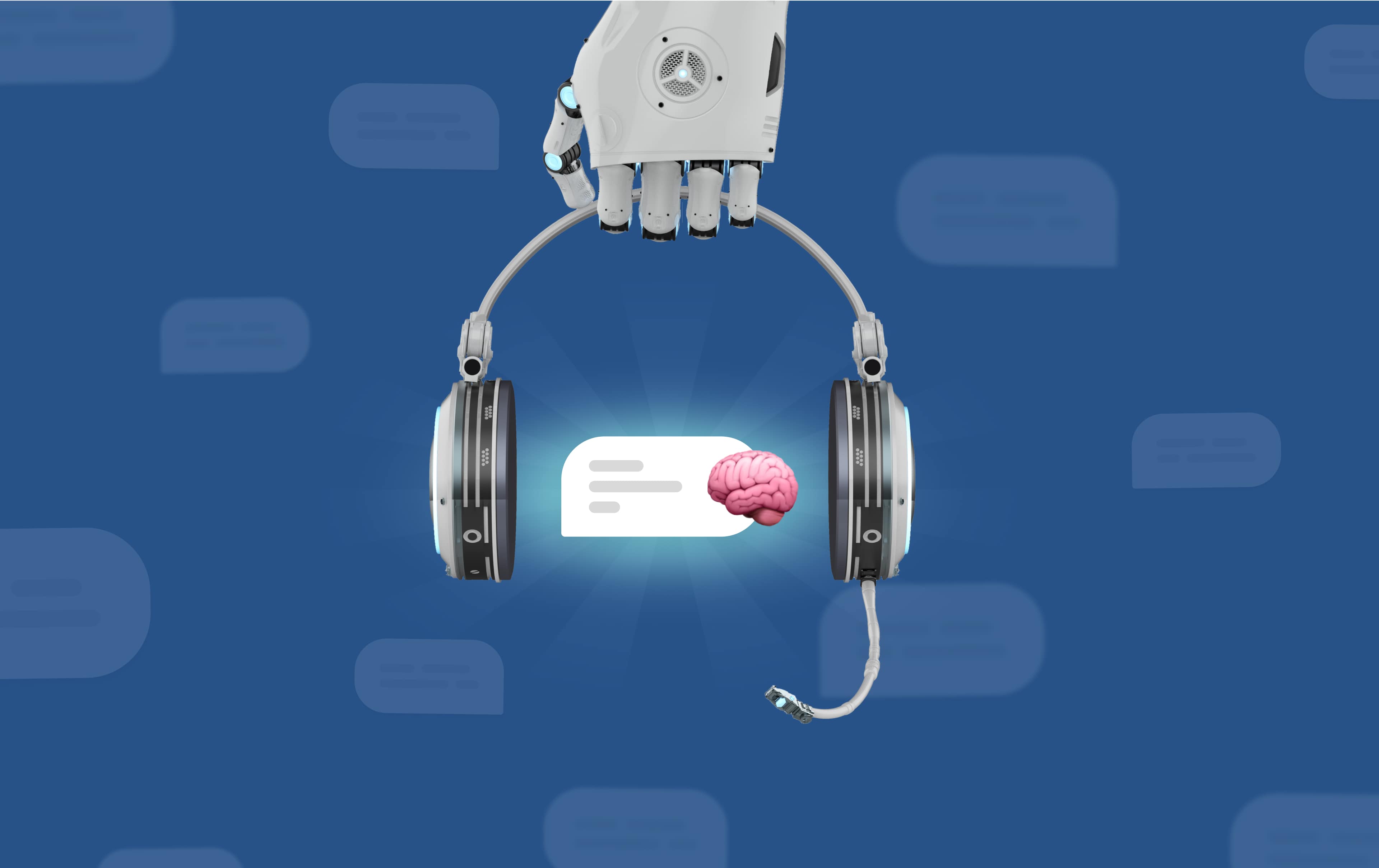
In today's highly competitive business landscape, customer service plays a pivotal role in determining the success and longevity of a company.
With rising competition and an ever-growing number of options available to consumers, businesses must differentiate themselves by providing exceptional customer service.
Customers are no longer just looking for quality products or services; they seek seamless experiences, personalized interactions, and prompt resolutions to their queries or concerns. In fact, studies have shown that 80% of customers are willing to switch to a competitor if they encounter poor customer service. Therefore, investing in superior customer service, including adopting innovative tools like chatbots, is essential for businesses to build customer loyalty, foster positive brand perception, and ultimately drive revenue growth.
In this blog post, we will explore the world of customer service chatbots and delve into the best ones available. We will discuss their benefits and key features and showcase some successful case studies. Whether you’re a small startup or a large enterprise, understanding the capabilities and potential of customer service chatbots can help you revolutionize your customer support operations.
So, let’s dive in and discover the best customer service chatbots to take your business to the next level of customer satisfaction.
What is Customer Service Chatbot?
A customer service chatbot is an AI-powered program designed to interact with customers and provide assistance or support. Customer service chatbots can automate routine tasks, answer frequently asked questions, provide product information, process orders, and offer personalized recommendations.
Key Features of Effective Customer Service Chatbots
When it comes to customer service chatbots, certain key features set apart the truly effective ones from the rest. These features empower chatbots to deliver exceptional support experiences and meet customer expectations.
Natural language processing and understanding
Effective customer service chatbots possess several key features contributing to their success in delivering exceptional support experiences. One crucial feature is natural language processing (NLP) and understanding (NLU), enabling chatbots to comprehend and interpret customer queries accurately. This capability allows them to respond in a conversational and human-like manner, leading to more meaningful interactions.
Learn more about NLP & NLU here: What Are Bots? How Do Chatbots Work?
GPT and Customer Service Chatbots
GPT models bring advanced natural language understanding, conversational flow, content generation, personalization, and continuous learning capabilities to customer service chatbots.
GPT models excel at understanding and generating human-like text. They can comprehend the nuances of customer queries, even in complex or ambiguous situations. In addition, GPT models can maintain a coherent conversational flow. They can understand the context of ongoing conversations, refer to previous messages, and generate responses that align with the customer's intent. This capability creates a more natural and engaging dialogue between the chatbot and the customer.
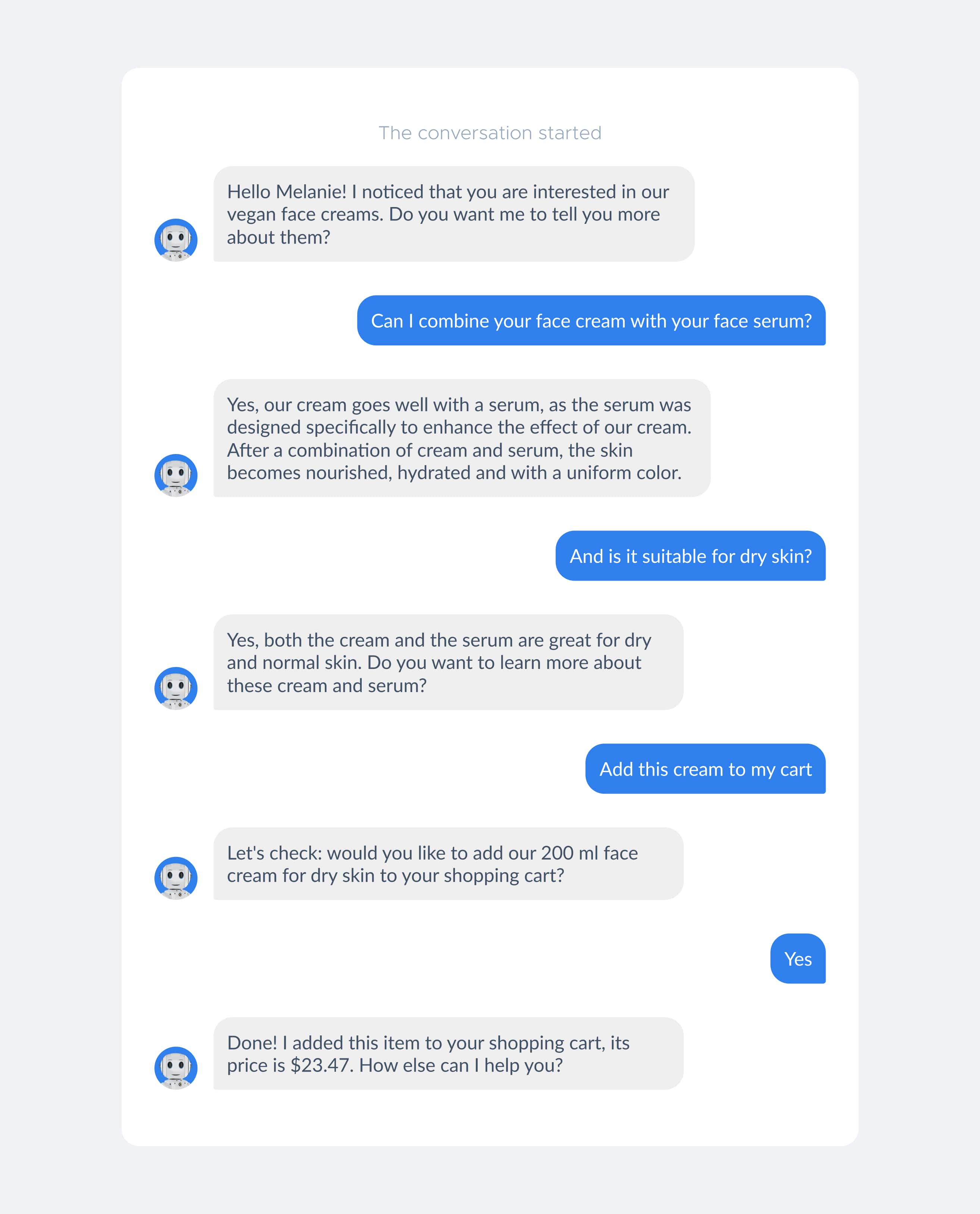
GPT models have been trained on vast amounts of data, making them excellent at generating informative and helpful responses. They can provide detailed explanations, step-by-step instructions, or relevant product/service information. This ensures that customers receive valuable assistance and can find solutions to their queries.
Want to test GPT-powered chatbots on your website? Try our FREE GPT prototype generator trained on your website & data.
Integrations
Integrations are essential for customer service chatbots because they expand capabilities and improve the customer experience. Key advantages include access to customer data, seamless workflow with other systems, omnichannel support, task automation, and real-time insights. Integrations enhance personalization and efficiency and provide a seamless experience for customers and businesses.
Contextual awareness and conversation history
Contextual awareness and conversation history are essential in customer service chatbots because they enable a more personalized and efficient support experience. Contextual awareness allows chatbots to understand the specific context of a conversation, providing relevant and accurate responses.
Conversation history retention ensures continuity in interactions, allowing chatbots to refer back to previous exchanges and deliver a seamless experience. These features save time, eliminate repetition, and enable chatbots to offer proactive suggestions based on customer journeys and preferences. Ultimately, they enhance customer satisfaction and streamline the support process.
Seamless handoff to human agents when necessary
Effective chatbots can seamlessly hand off conversations to human agents when necessary, ensuring a smooth transition and avoiding frustrating customer experiences.

These key features collectively contribute to the overall effectiveness of customer service chatbots and their ability to deliver satisfactory resolutions to customer inquiries.
Examples of Best Customer Service Chatbots
1. Leading cosmetics creator saved 20,919$ in 30 days
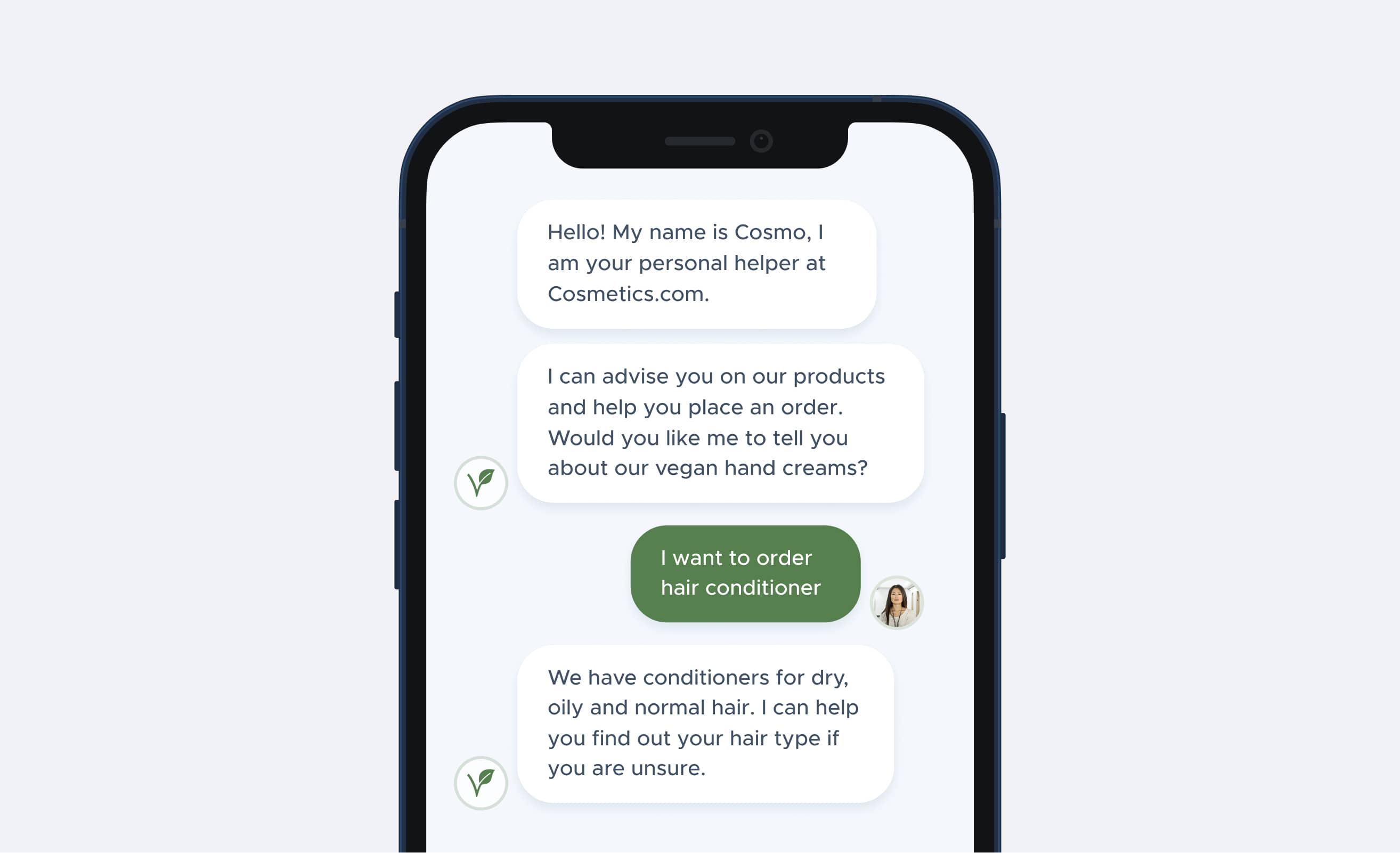
Challenge:
The client is the world leader in creating hair, skin, and body care products. Over the past five years, the brand has experienced remarkable growth, resulting in:
- 1.10M website monthly visitors
- ~282% growth of inquiries per year
- Increased customer service response waiting time:
- 20 seconds first response;
- 2 minutes for follow-up responses;
- 10m 33s average resolution time
Solution:
The company implemented a website chatbot to address the growing demand and provide efficient support. This chatbot effectively handles repetitive and time-consuming questions before and after purchase.
In just 30 days, the results were:
- 22.7% were fully automated, providing an end-to-end resolution without human intervention.
- Another 54% of the requests were partially automated, meaning the chatbot assisted in resolving them
- X3 faster customer service resolution time (max 3mins compared to 10m 30s)
- 1,101 automated conversations, alleviating the workload on human support agents.
$20,919 saved costs ($19 per conversation)
Read the full case study here: Leading cosmetics creator saved 20,919$ in 30 days
2. Bank of America: Nearly 1.5 Million Interactions Per Day via the chatbot
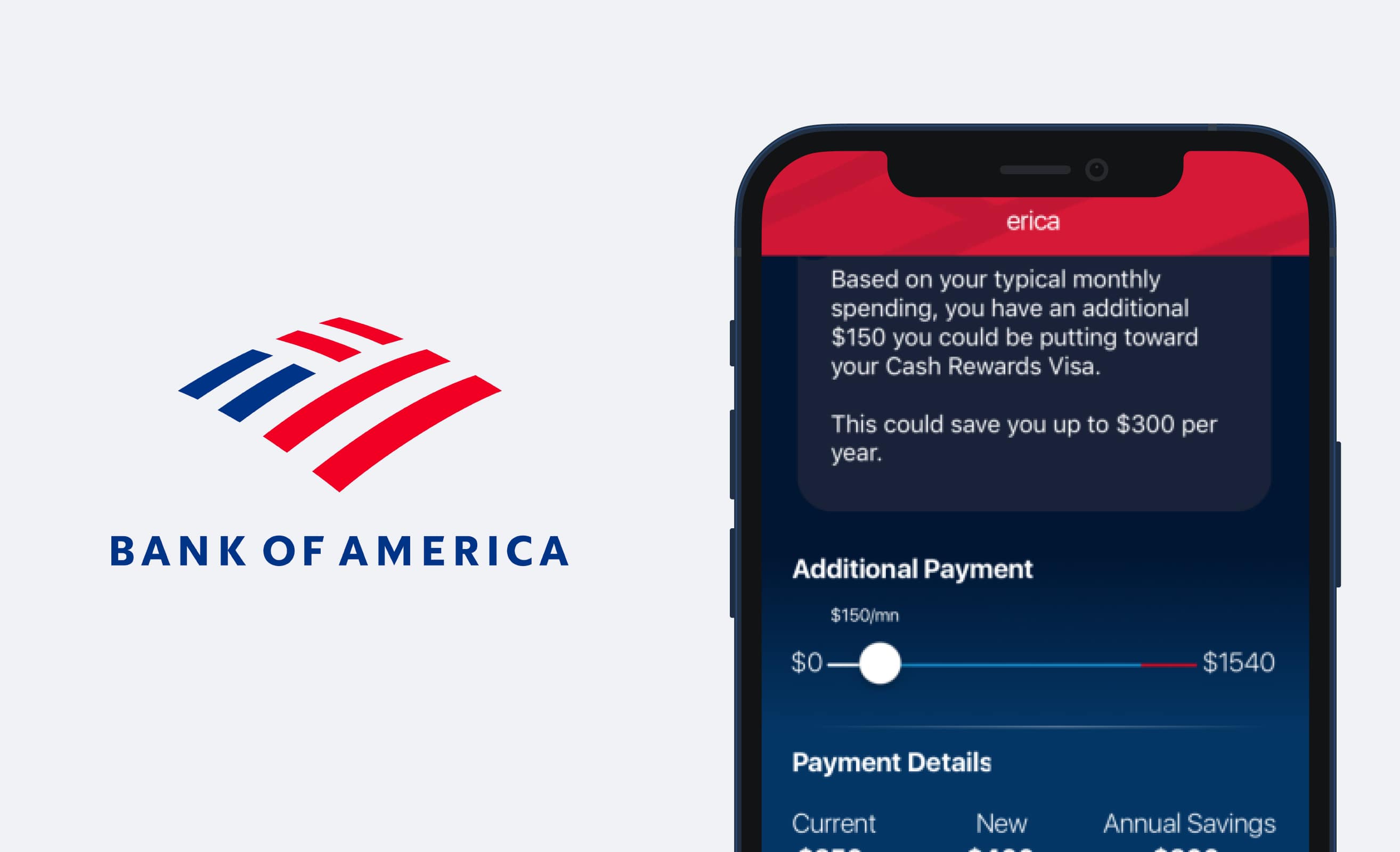
Bank of America introduced "Erica," an AI-powered virtual assistant chatbot. Erica assists customers with various banking tasks, such as balance inquiries, transaction history, and bill payments. It provides personalized financial insights and guidance, enhancing the customer banking experience.
Challenge:
Bank of America faced the challenge of meeting the growing demands of its customers while providing personalized and efficient banking services. They needed a solution to streamline customer support, reduce response times, and offer 24/7 assistance. Additionally, there was a need to deliver personalized financial guidance and insights to customers based on their individual preferences and financial goals.
Solution:
Bank of America introduced its AI-powered virtual assistant chatbot, Erica, to assist customers with various banking tasks such as checking balances, reviewing transaction history, and making bill payments. It provides personalized financial insights and guidance, enhancing the customer banking experience.
Results:
Erica was launched in 2018 and has since helped nearly 32 million clients with their everyday financial needs. By October 2022, Erica had exceeded 1 billion interactions with Bank of America clients.
- Approximately 32 million clients have engaged with the chatbot
- 1 billion interactions were made with Erica,
- More than 98% of clients get the answers they need using Erica.
3. GSM Server: 75% of customer support requests automated by the chatbot

GSM Server is a multi-range international online store where you can conveniently purchase telecommunication-related technological solutions.
Challenge:
GSM Server customer and technical support teams faced challenges due to the overwhelming volume of repetitive queries. Additionally, certain user flows on the website, such as the account password recovery process, proved to be overly complex and stopped customers from achieving quick resolutions. Furthermore, the team encountered difficulties in delivering personalized customer experiences as manually identifying customer information, including email, contact number, and previous purchase history, consumed significant time and resources. Compounding the issue, the support team operated only on weekdays and until Saturday afternoon, leaving customers without assistance on Saturday evenings and Sundays, resulting in customer dissatisfaction.
Solution:
To address these challenges, GSM Server implemented a website chatbot for customer service. The chatbot efficiently handles general and specific product-related queries, provides order information, and assists customers in making purchases. Moreover, the chatbot seamlessly connects customers with a live human agent if their queries require further assistance, ensuring a comprehensive and satisfactory support experience.
Results:
- The chatbot automated 72.28% of all customer requests.
- 1600+ English-speaking conversations per month
- Supporting both English and Spanish customer service
Read a full case study on how GSM Server automated customer support
4. Amtrak: Saved $1,000,000 in customer service expenses in a single year.
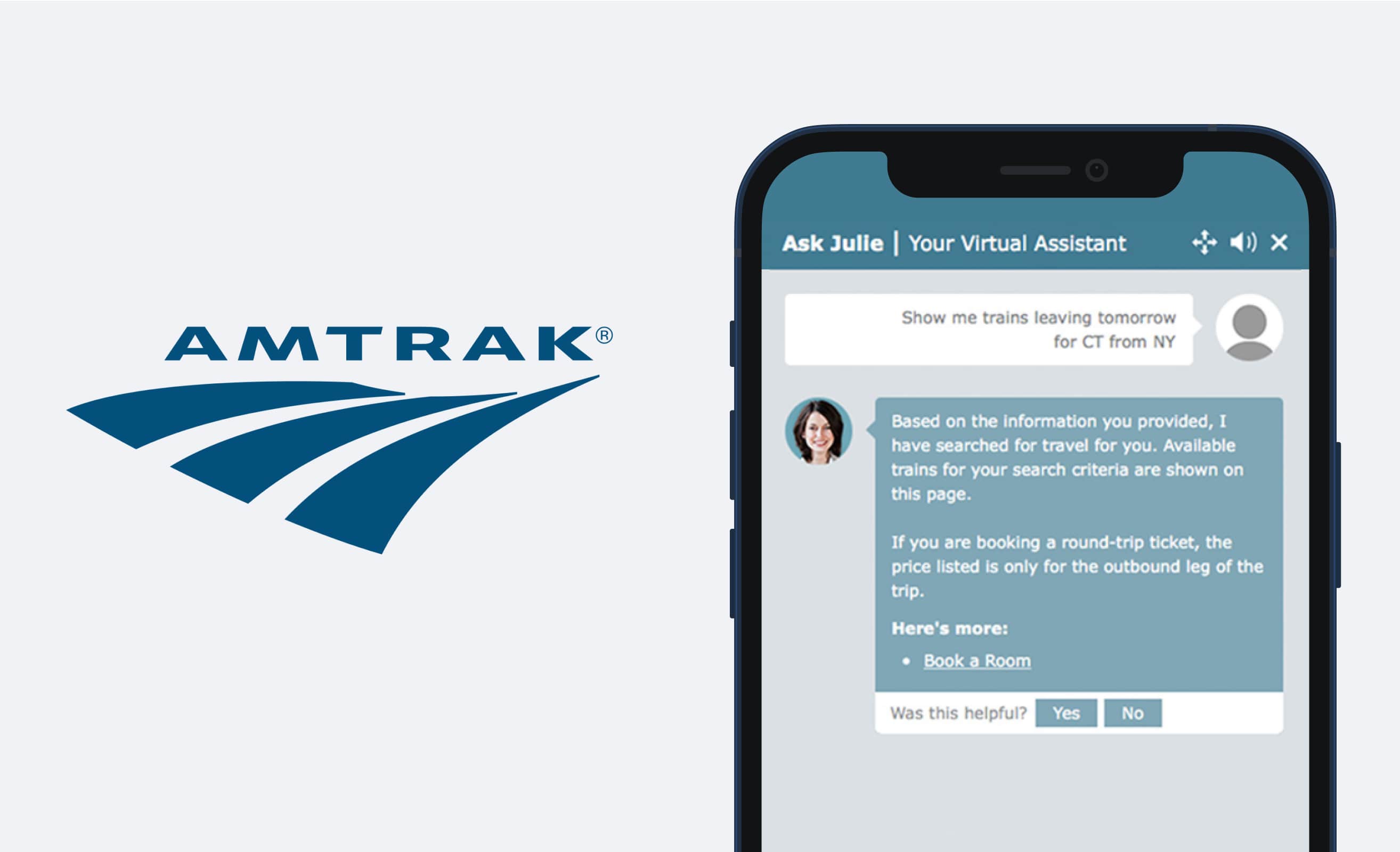
Amtrak is the largest provider of train passenger transportation. They have 20,000 employees and serve around 30 million passengers per year.
Challenge:
Amtrak faced the challenge of managing a high volume of customer inquiries and providing timely and accurate responses. They wanted to reduce the reliance on traditional customer service channels such as phone calls and emails, which could lead to long wait times and delays in addressing customer queries.
Solution:
To enhance customer service and reduce the reliance on traditional communication channels, Amtrak introduced the chatbot "Ask Julie." This AI-powered virtual assistant assists visitors in finding the information they require without the need for phone calls or emails to customer service.
Results:
With over 5 million questions received yearly, the chatbot continually adapts, learns, and improves its performance. It not only provides relevant answers but also offers upsells for additional features, new destinations, or membership clubs offered by Amtrak. Consequently, the implementation of Ask Julie has resulted in a remarkable 30% increase in revenue compared to bookings made through other channels.
- 800% return on investment.
- Increased bookings by 25%.
- Saved $1,000,000 in customer service expenses in a single year.
- Over 5,000,000 questions answered every year.
Bookings through chatbots generate 30% more revenue.
5. International leading supplier of commercial equipment automated 50% of customer requests

The company is the leading international supplier of commercial equipment in Europe. With 1000 employees on board, they offer more than 25.000 products and count more than 350.000 global customers in 180 countries so far. The company provides various equipment for restaurants, bars, hotels, laboratories, and retail food markets.
Challenge:
Experiencing an impressive growth rate of over 20% annually, the company is thriving. However, the surge in customer numbers has led to a proportional increase in customer inquiries and requests.
Solution:
To effectively address the growing demand, the company proactively developed a multilingual WhatsApp chatbot capable of handling pre- and post-sale customer inquiries.
Results:
- The chatbot is proficient in seven languages, including English, French, German, Dutch, Polish, Turkish, and Arabic, ensuring effective communication with customers worldwide.
- 50% of customer service requests are successfully automated, streamlining the support process and freeing up resources
- The chatbot provides instantaneous responses, eliminating customer waiting times, while resolution times are significantly reduced to just a few minutes.
Read a full story here: A multilingual eCommerce chatbot for WhatsApp and website
6. LEGO: A lovable robot that reached over 2.69 million people
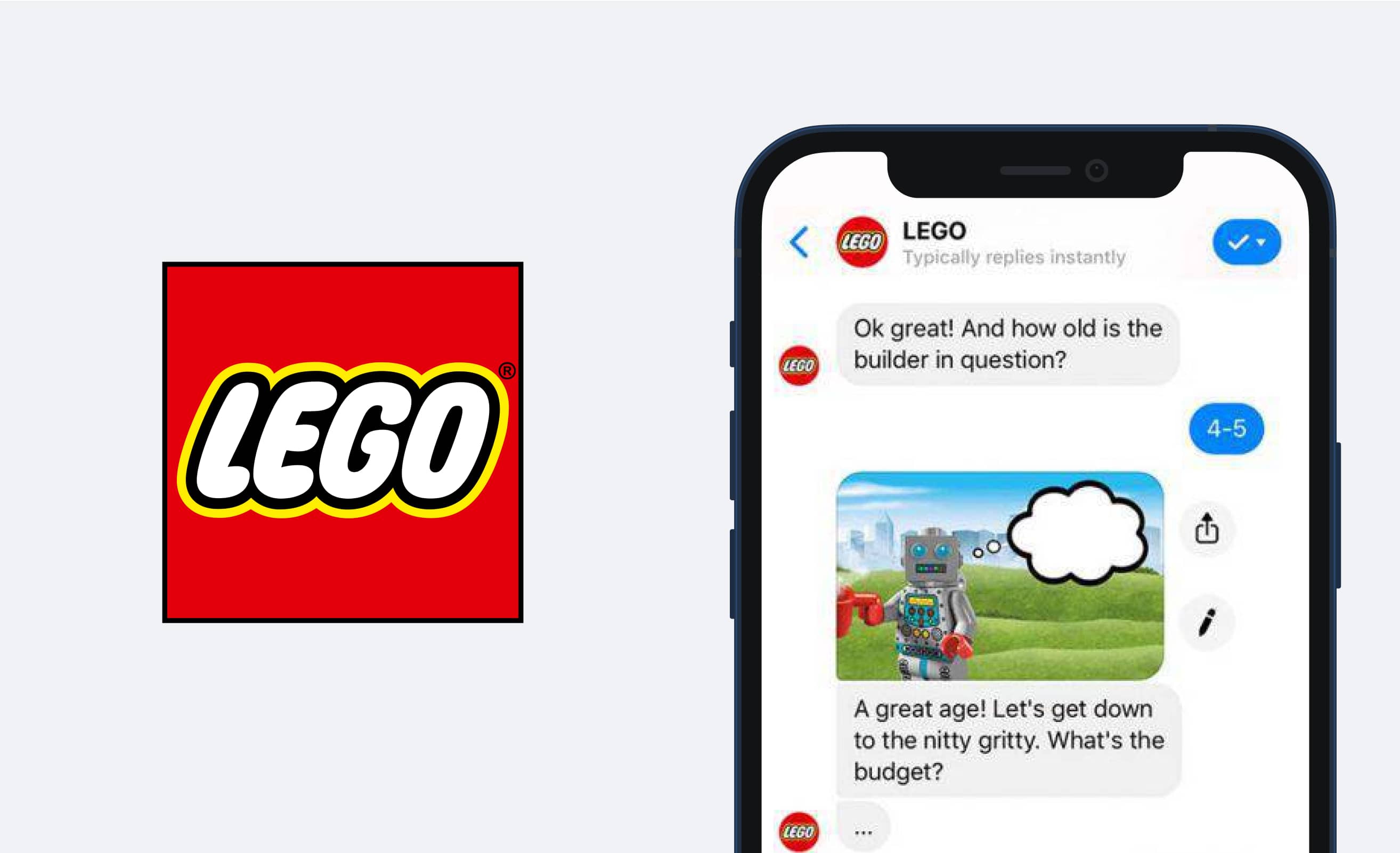
LEGO introduced Ralph, an adorable and charismatic robot designed with a singular purpose: to assist users in discovering the perfect gift, transforming them into gifting experts.
Challenge:
LEGO aimed to address the challenge of helping customers find the perfect gift while creating a carefree and enjoyable shopping experience. They recognized that the shopping process could be stressful and wanted to provide personalized recommendations and assistance to their customers.
Solution:
To differentiate Ralph from other chatbots, LEGO infused his tone of voice with the charm and charisma of the beloved LEGO Movie characters. The warm and inviting language alleviated the stress often associated with shopping, making the experience enjoyable, carefree, and well-informed. To further bring Ralph to life, playful GIFs and emojis were incorporated into the interactions.
Results:
Since its launch on LEGO's website, Ralph, is engaging customers and providing tailored product recommendations. By understanding customers' preferences, Ralph effectively guides them toward the most suitable LEGO sets.
- Ralph's reach extended to an impressive 2.69 million users, showcasing the extensive reach and popularity of the chatbot.
- Over 50 thousand conversations were initiated with potential new customers, indicating the successful engagement and acquisition of new leads.
- 25% of all in-season online sales, with a 6x return on ad, spend within certain markets
- 8.4x higher conversion rate and a 65% lower cost per purchase than other conversion-based ad formats (such as carousels, Canvas, and collections)
Tips for Creating the Best Customer Service Chatbot
1. Understand your customer needs: Analyze your customers' pain points and common inquiries. Consider the types of questions they frequently ask and the support they require. This will help you identify the key features and functionalities your chatbot should have to address their needs effectively.
2. Define your goals: Clearly outline your objectives and determine what you want to achieve with a customer service chatbot. Identify specific areas where the chatbot can assist and enhance your customer support.
3. Evaluate chatbot capabilities: Look for chatbots that offer natural language processing (NLP) and machine learning capabilities. These features enable the chatbot to understand and respond to customer queries accurately, improving the overall user experience.
4. Consider integration options: Ensure that the chatbot can seamlessly integrate with your existing customer service platforms and systems like Salesforce, etc. This integration allows for a unified customer experience and facilitates the transfer of information between the chatbot and human agents if needed.
5. Personalization and customization: Build a chatbot that offers personalized responses and can adapt to individual customer preferences. Tailor the chatbot's tone, voice, and interactions to align with your brand's personality and values.
6. Test the chatbot's performance: Before implementing a chatbot, conduct thorough testing to ensure its accuracy, responsiveness, and ability to handle various scenarios. Consider running pilot programs or beta testing with a small group of customers to gather feedback and make necessary improvements.
7. Scalability and flexibility: Choose a chatbot platform or vendor that can scale with your business growth and handle increasing customer demands. The platform or vendor should be flexible enough to accommodate future enhancements and updates as your customer service needs evolve.
8. Analytics and reporting: Look for platforms or vendors with comprehensive analytics and reporting capabilities. This data will help you track the chatbot's performance, identify areas for improvement, and gain insights into customer behavior and preferences.
9. User-friendly interface: Create a chatbot with an intuitive and user-friendly interface. Both customers and agents should find it easy to interact with and navigate. A well-designed interface enhances the overall user experience and encourages customer engagement.
10. Support and maintenance: Consider the support and maintenance offered by the chatbot provider. Ensure they provide timely assistance, regular updates, and ongoing maintenance to address any technical issues or evolving customer service requirements.
In conclusion, implementing a customer service chatbot can significantly enhance the overall customer experience and streamline support operations. With the advancements in AI and NLP technologies, chatbots are becoming increasingly capable of understanding and addressing customer inquiries effectively. By automating repetitive tasks and providing instant responses, chatbots save valuable time for both customers and support teams, resulting in improved efficiency and cost savings.
Considering customer service chatbots? Book a free consultation with us to discuss your idea and get expert advice.






